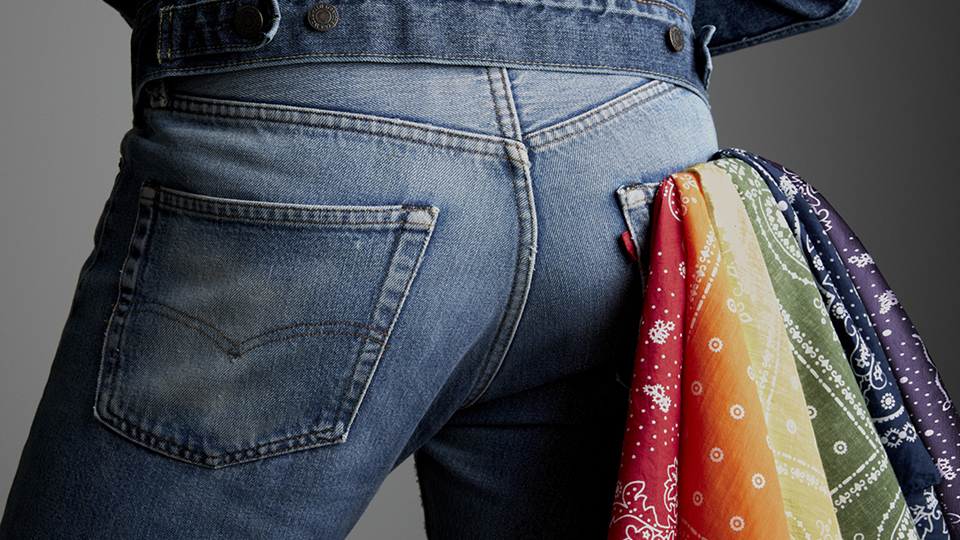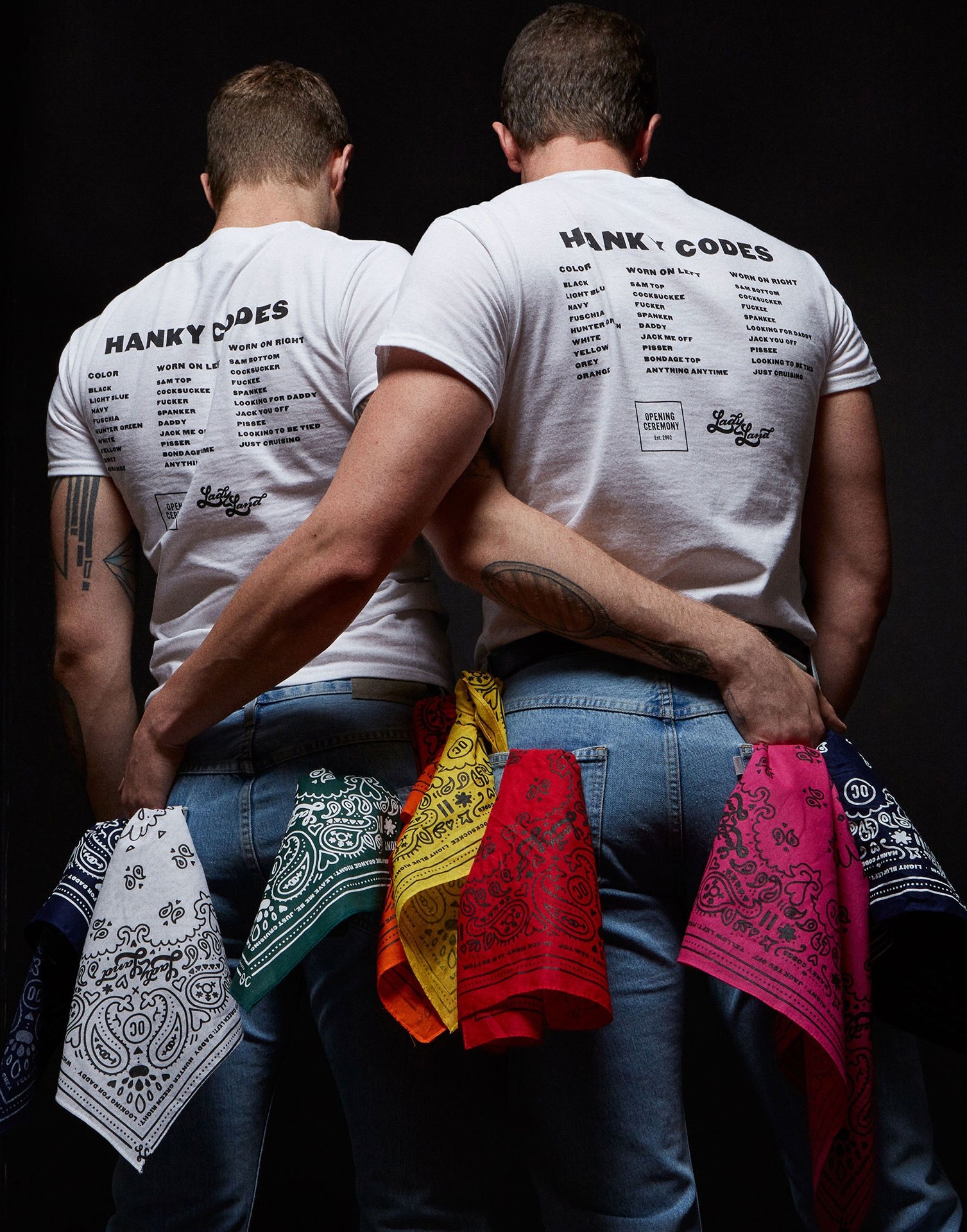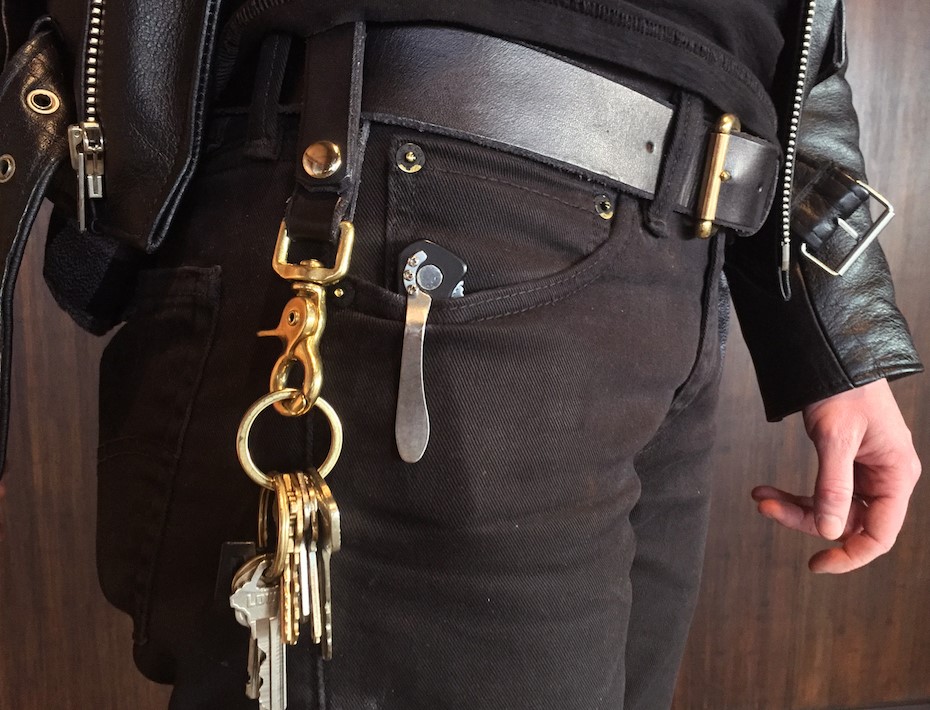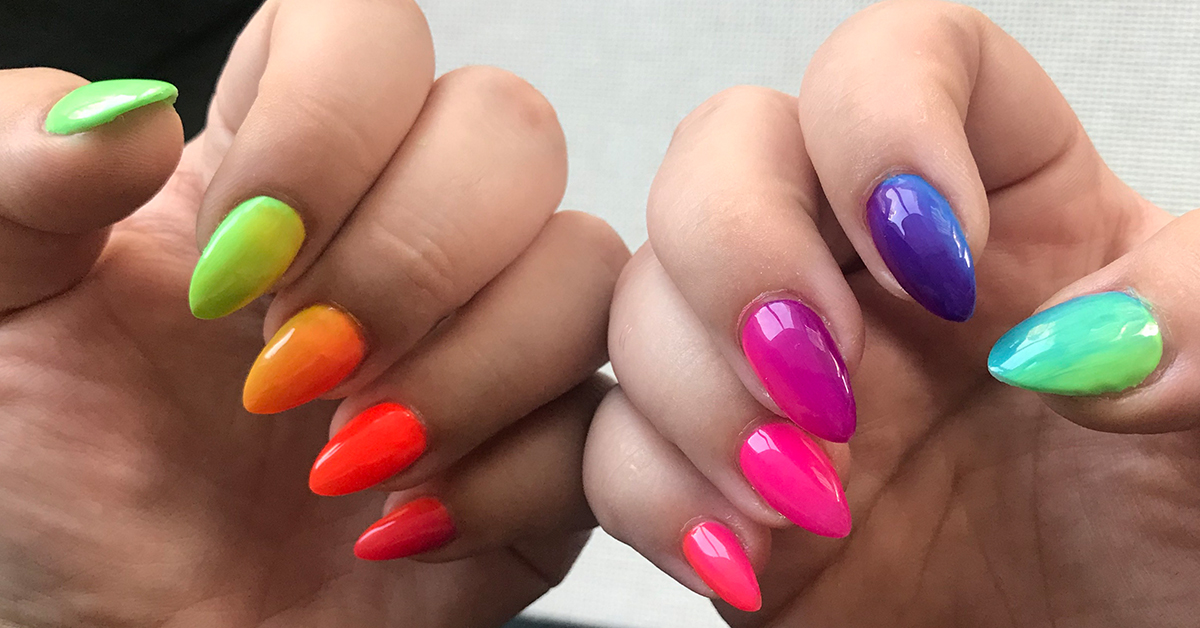|

HOME |
ABOUT | INDEX |
NEWS |
FACEBOOK |
CONTACT
FLAGGING
Handkerchief Code |
Bandana | Signaling


Symbols and Flags
Slang
Terminology
Vintage Terms and Pictures
Fashion and Design
Terminology|Definitions

Queer Coding
"Flagging
has long been a part of gay subculture —
a way of subtly and safely saying I’m
here and I’m queer without having to
out yourself to the straights. This
tactic was especially employed in the
old days (not so old days, it was really
only like 30 years ago) when it wasn’t
as safe to be outwardly queer. While our
existence is still othered and
persecuted in so many ways, we do have
more ability to be freely ourselves in
public. And thus, flagging has sort of
fallen to the wayside."
-Corinne
Werder, April 2018
Before
Grindr, queers wore their preferences
on their sleeves (and back pockets). By
using bandanas, hankies, keyrings, or
fingernail polish, the queer community
has a way of sending a subtle signal or
secret code to other members.
In a time where a discreet means of
finding other queers and a means of
quickly identifying interests was
needed, bandanas or hankies were
readily available in a variety of colors
and prints. Worn wrapped
around biceps, necks and wrists or
tucked into the back pockets of pants
and, with their colors
and placement, left side or right,
they became the key in a system of coded
messages signaling an individual’s
sexual proclivities, tastes and kinks,
referred to as the "the hanky code."



What Does Flagging Mean and is it Still
Practiced Today?
Queer Code: Secret Languages of LGBTQ
Queer Flagging 101: How to Use the Hanky
Handkerchief Code
Tutorial: Hanky Code
GayFlashback: A Handy
Hanky Code Primer
Flagging: Fierce Way to Tell the World
You're Queer
What is the Hanky Code?
Color-Coded Party Cups
Ladies Who Are Into Ladies: Finger
Flagging Manicure
Queer Fashion and Language: Hanky Code
Color Codes: Flagging in the Queer
Community
Info: Queer Fashion
More than just the gay equivalent of a
pocket square, flagging is a way of communicating basic
information without needing to speak.
It can be described as a secret sex
language. Bandanas are soft introductions
or subtle invitations. They are
facilitators of further interaction. They
are self-labeling devices, material
imbued with meaning, intended to provide
enough information for cruising parties
to determine the likelihood of an erotic
match. In many cases, they provide a way
of starting a conversation and making an initial connection.
When worn on the left side you were
recognized as a "top," and right side,
a "bottom." This was a universal recognition
signal or code. While it initially started with
only a few colors, an expanded array of
specialty colors (and coded objects)
were developed to convey, what are in
many cases equally obscure sexual
practices.



Queer Flagging 101: How to Use the Hanky
Handkerchief Code
Flagging: Fierce Way to Tell the World
You're Queer
What is the Hanky Code?
Color Codes: Flagging in the Queer
Community
Ultimate Hanky Quiz
Secret Style Language of the LGBTQ
Community
How to Queer Any Outfit
Hanky Code: History Behind Gay
Flagging and How to Do It Today
Gay Hanky Code Chart
Nail Polish: Life and Death of Femme
Flagging
BDSM Hanky Code: Signaling Your Kinks to
Others
Hanky Code: Is It An Actual Thing?
Info: Queer Symbols and Flags
Gay Hanky Code Discussed
Ring of Keys
Hanky Code
Flagging, or the hanky code, has been
around for some time, some say since the
gold rush. It became popular in the
1970s when gay men used handkerchiefs in
certain pockets to signify sexual acts
they were interested in giving/receiving
— often in public parks or bathrooms or
around the town.
The handkerchief code (also known as the
hanky code, the bandana code, and
flagging) is a color-coded system,
employed usually among the gay male
casual-sex seekers or BDSM practitioners
in the United States, Canada, Australia
and Europe, to indicate preferred sexual
fetishes, what kind of sex they are
seeking, and whether they are a
top/dominant or bottom/submissive.
Wearing a handkerchief on the left side
of the body typically indicates one is
an active "giver," while wearing it on
the right side of the body would
indicate one is a passive "receiver."
Hanky placement was combined with hanky
color to further indicate the referred
activity. The hanky code was
widely used in the 1970s by gay and
bisexual men.
Traditionally (and in general),
hankerchief colors have the following
meanings: grey for bondage, black for
S&M, blue for oral, purple for trans or
non-binary, gold for threesomes, brown for
scat, yellow for watersports, green for
hustler, pink for
dildo play, red for fisting, orange for adventurous, and
so on.



What Does Flagging Mean and is it Still
Practiced Today?
Queer Flagging 101: How to Use the Hanky
Handkerchief Code
Tutorial: Hanky Code
Gay Flashback: A Handy
Hanky Code Primer
Info: Queer Jewelry and Merchandise
Flagging: Fierce Way to Tell the World
You're Queer
What is the Hanky Code?
Ladies Who Are Into Ladies: Finger
Flagging Manicure
How to Queer Any Outfit
Gay Hanky Code Chart
Nail Polish: Life and Death of Femme
Flagging
Hanky Code: Is
It An Actual Thing?
Queer Code: Secret Languages of LGBTQ
BDSM Hanky Code: Signaling Your Kinks to
Others
The History of the Carabiner
Flagging:
Yesterday and Today
The hanky code (flagging) was a 60s and
70s era way for gay men and BDSM
fetishists to covertly signal their
sexual interests in an age when seeking
and having gay sex could get you
arrested, beaten up or fired. Different
colored handkerchiefs signified what sex
acts you prefer and the pocket position
indicated whether you were a
dominant/top (left pocket) or
submissive/bottom (right pocket).
Though it has largely fallen into
disuse, it still serves as a handy
conversation starter in some gay and
lesbian clubs.
The origin of the hanky code is unclear.
One legend claims it may date back to
the mid-19th century when San
Francisco’s population began to explode
and was made up of a large majority of
men who had traveled to the city looking
for work. As a result, men were forced
to dance together at socials, with some
men wearing a blue bandanna to show that
they were assuming the male leading
parts in the dance while others wearing
red bandannas to show they were taking
the female following role in the dance.
Another theory suggests that in the
1970’s a journalist from the Village
Voice wrote that instead of wearing keys
to indicate if someone was a ‘top’ or
‘bottom,’ gays should be more subtle and
just wear different colored hankies.
As the hanky code became better known,
marketers began creating meanings for
every bandana color imaginable, but it’s
likely that few people actually knew the
entire spectrum because who could
possibly remember all 65 variations or
tell the difference between orange and
coral in a dark bar?
Recently, sexually active high school
students (gay and straight) have
sometimes converted the bandana/hanky
system into a bracelet/hair scrunchy
system. Trying to emulate a
similar coding system as their
club-going adult counterparts, teenagers
might elect to wear colored plastic
bracelets of colored hair scrunchies on
their wrist to indicate to others their
interest in exploring certain sexual
acts.
Queer Fashion and Language: Hanky Code
Color Codes: Flagging in the Queer
Community
What Does Flagging Mean and is it Still
Practiced Today?
Ultimate Hanky Quiz
Secret Style Language of the LGBTQ
Community
Info: Queer Symbols and Flags

Back Pocket App
Back in the 1970s,
gay men developed a secret language using nothing but
handkerchiefs in their back pockets. It was called the
hanky code. The system was brilliantly simple yet
detailed.
Different colors indicated various intimate preferences,
while pocket placement signaled your role. Left pocket
meant you were a top. Right meant you were a
bottom.
This ingenious pre-smartphone dating tactic allowed men
to communicate desires discreetly in bars and clubs when
being openly gay could be dangerous.
Next time you see a random handkerchief peeking out of
someone's pocket at the club, just remember, your
grandgays were the original app developers, turning
fashion accessories into the world's first analog Grindr.
[Source:
Gay Buzzer, June 2025]
How to Queer Any Outfit
Hanky Code: History Behind Gay
Flagging and How to Do It Today
BDSM Hanky Code: Signaling Your Kinks to
Others
Gay Hanky Code Chart
Info: Queer Jewelry and Merchandise
Nail Polish: Life and Death of Femme
Flagging
Hanky Code: Is It An Actual Thing?
Gay Hanky Code Discussed
The History of the Carabiner



Key Codes and
Lesbians
In addition to gay and bi men, lesbians
would also wear their keys hanging on a
chain from their pockets to indicate top
or bottom. This code followed the hanky
code rules with keys hanging on the left
indicating top, or keys on the right,
bottom.
People involved in the leather scene
used to (and sometimes still do) wear
their keys clipped to their belt loops
based on their sexual preferences: on
the right side to indicate that the
wearer is a bottom, and left if she’s a
top. One oft-repeated theory says a
Village Voice writer once jokingly
suggested that gay men should dispense
with this binary key system and develop
a more complex system to reflect a
broader taxonomy of sexual desire, thus
sparking the creation of the hanky code.
The beltside key ring is one of the most
enduring sartorial symbols of lesbian
culture, one of the few stereotypes of
our kind that’s both inoffensive and
true. Baby gays searching the internet
for ways to find their people and send
out lesbian vibes will learn that the
universal key chain signal for lesbians
is the carabiner clip and even straight
people know it.
Ring of Keys
Queer Flagging 101: How to Use the Hanky
Handkerchief Code
The History of the Carabiner
Hanky Code: History Behind Gay
Flagging and How to Do It Today
Tutorial: Hanky Code
GayFlashback: A Handy
Hanky Code Primer
Flagging: Fierce Way to Tell the World
You're Queer
What is the Hanky Code?
Ladies Who Are Into Ladies: Finger
Flagging Manicure
Info: Queer Fashion
Queer Fashion and Language: Hanky Code
Color Codes: Flagging in the Queer
Community
Secret Style Language of the LGBTQ
Community
How to Queer Any Outfit
Queer Code: Secret Languages of LGBTQ
Color-Coded Party Cups


Femmes
and Flagging
"Well, it turns out flagging is having a
resurgence in the world of femme
lesbianism. Sweet, huh? The way it works
is this: you paint all your nails one
color, and then paint one solitary
finger (usually the ring and/or middle
finger) a different color."
-Jeremy Feist, Sept 2012
The hanky code has most often been
associated with gay and bisexual men,
though it doesn’t belong to just them.
In more recent years, femmes in the
queer community have developed their own
form of flagging in response to femme
invisibility. Femme invisibility is the
term for what feminine-looking queer
women experience when they try to
convince other lesbians that they are,
in fact, queer. It’s the utter lack of
being seen as lesbians. For most femmes,
bandanas or keys hanging from pockets
would stand out rather than be discreet.
The idea behind femme-flagging manicures
is that they’ll signal to nearby queers
that you’re a woman who is attracted to
other women. Primarily, most femmes will
paint all their nails one color, and
then paint their ring fingernails, or
ring and middle fingernails, a different
color (their “flagging” color). A pink
manicure with a glitter ring finger, for
example, could mean “femme for femme” (I
am a femme lesbian who prefers to date
other femme lesbians). Meanings
traditionally parallel the traditional
hanky code colors –- grey for bondage,
black for S&M, blue for oral, purple
for trans or non-binary, brown for
scat, yellow for watersports, green for
hustler, pink for
dildo play, red for fisting, orange for adventurous, and
so on.
The one potentially fatal flaw of the
finger-flagging system is the two-toned
approach to nails has become a larger,
mainstream trend among straight women as
well. Just like some straight dudes just
put handkerchiefs in their pockets
because it’s convenient, some women
paint their nails different colors
because it’s pretty.
[Source: Queer Events, Feb 2018]

Queer Flagging 101: How to Use the Hanky
Handkerchief Code
Tutorial: Hanky Code
Info: Queer Jewelry and Merchandise
What Does Flagging Mean and is it Still
Practiced Today?
Flagging: Fierce Way to Tell the World
You're Queer
What is the Hanky Code?
Ultimate Hanky Quiz
Ladies Who Are Into Ladies: Finger
Flagging Manicure
Queer Fashion and Language: Hanky Code
Ring Code:
Colors and Fingers
Here's a modern variation on the hanky
code. Instead of a bandana, the wearer can signal using colored rings on
designated fingers.
Asexual -
Black ring on right middle finger
Aromantic -
White ring on left middle finger
Pansexual -
Purple ring on left pinky finger
Polysexual -
Pink rink on left pinky finger
Bisexual - Two
rings on left thumb (no specific color) or one ring on right index finger (no
specific color)
Polyamorous/Swinger
- Black ring on right ring finger
Same Gender
(Gay/Lesbian) - Blue ring on right index finger
Gay (Male) -
Ring on thumb (no specific color, left or right)
Lesbian
(Female) - Ring on thumb (no specific color, left or right) or Ring on pinky
finger (no specific color, left or right) or Gold ring on left middle finger
And, of course, there are several
merchandisers who offer a variety of rings with the official flag colors.
     
Color Codes: Flagging in the Queer
Community
Secret Style Language of the LGBTQ
Community
Info: Queer Symbols and Flags
How to Queer Any Outfit
Hanky Code: History Behind Gay
Flagging and How to Do It Today
Gay Hanky Code Chart
Color-Coded Party Cups
The History of the Carabiner
Info: Queer Jewelry and Merchandise
Nail Polish: Life and Death of Femme
Flagging
Hanky Code: Is
It An Actual Thing?
Ring of Keys
HOME
QUEER CAFE
│ LGBTQ Information Network │ Established 2017
|